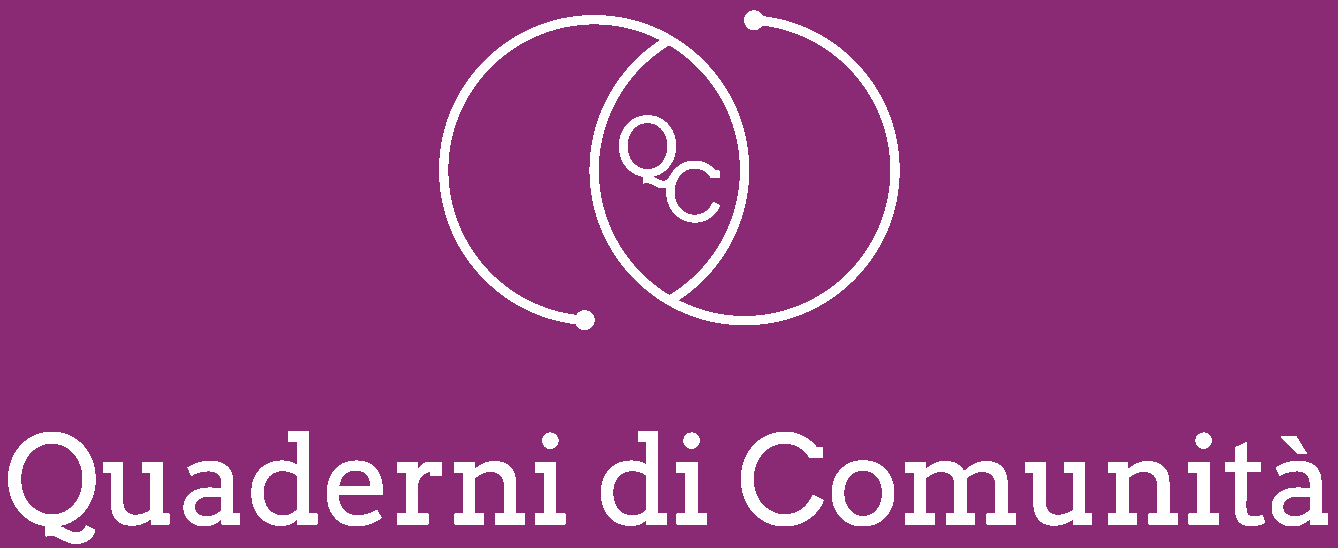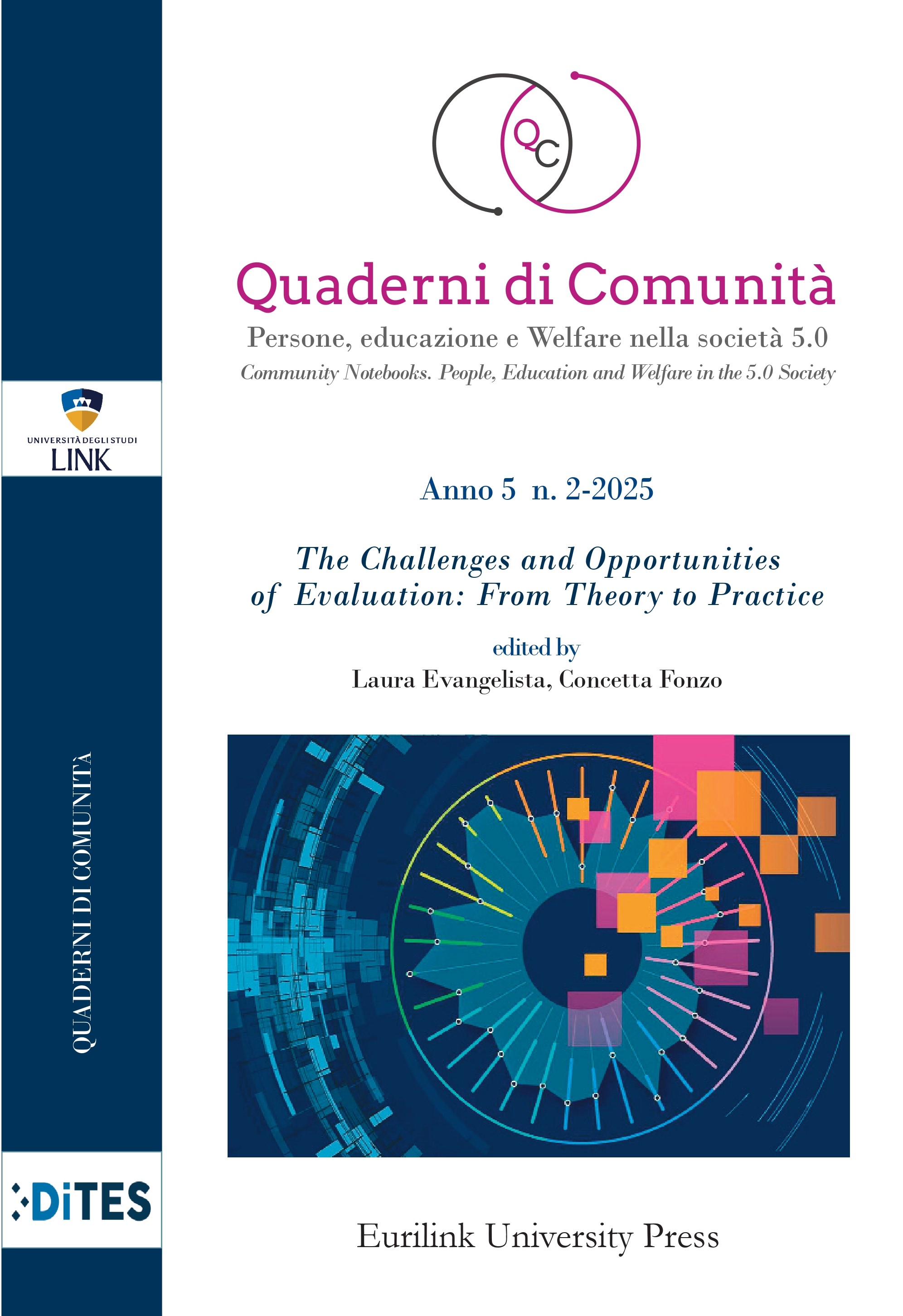Metodologia per la progettazione e la creazione di rubriche per la valutazione delle competenze
Parole chiave:
valutazione delle competenze, istruzione superioreinnovazione educativa, rubriche olisticheAbstract
Questo articolo presenta una metodologia per progettare rubriche olistiche nel modello educativo Tec21 di un’università messicana. Adattabile ad altre istituzioni, assicura valutazioni affidabili e standardizzate, promuovendo la collaborazione. Le rubriche valutano competenze tramite comportamenti essenziali, con un glossario che ne aumenta l’affidabilità. La formazione dei docenti è cruciale, e l’uso combinato di rubriche olistiche e specifiche garantisce flessibilità e valutazioni eque.
Riferimenti bibliografici
Aselebe, K. (2022). Higher education and graduates’ unemployability in Nigeria: The policy implication. The European Conference on Education 2022: Official Conference Proceedings (pp. 73-81). DOI: 10.22492/issn.2188-1162.2022.7.
Algül, Y. (2024). Higher education and unemployment in Turkey: Regional panel analysis with undergraduate, master’s, and PhD perspectives. Trends in Business and Economics. DOI: 10.16951/trendbusecon.1473077.
Bala, I., & Bala, A. (2024). Unemployment after higher education in India: A statistical analysis. International Journal of Research and Innovation in Social Science. DOI: 10.47772/ijriss.2024.809052.
Berciano, A., Salgado, M., & Alsina, Á. (2024). Selection and analysis of videos in the initial training of early childhood mathematics education teachers: the R4 Rubric. Uniciencia, 38(1), 172-187.
Black, P., an& Wiliam, D. (2005). Lessons from around the world: How policies, politics and cultures constrain and afford assessment practices. Curriculum Journal, 16(2), 249-261.
Box, C., and Vernikova, E. (2019). Formative Assessment in United States Classrooms. Cham, The Netherlands: Palgrave Macmillan.
Brookhart, S. M. (2013). How to Create and Use Rubrics for Formative Assessment and Grading. Asociación para la Supervisión y el Desarrollo Curricular (ASCD).
Chan, C. K. Y., & Luo, J. (2020). A four-dimensional conceptual framework for student assessment literacy in holistic competency development. Assessment and Evaluation in Higher Education. DOI: 10.1080/02602938.2020.1777388.
Cicek, J. S., Ingram, S., Sepehri, N., et al. (2015). Rubrics as a vehicle to define the twelve CEAB graduate attributes, determine graduate competencies, and develop a common language for engineering stakeholders. PCEEA Conference Proceedings. DOI: 10.24908/PCEEA.V0I0.5876.
Corona Martínez, D., and Real García, J. J. (2019, March). Using Malone’s theoretical model on gamification for designing educational rubrics. Informatics, 6(1), 9.
Cushen, J., & Durkin, L. (2022). The future of transversal competencies in higher education assessment. In Handbook of Research on Future of Work and Education: Implications for Curriculum Delivery and Work Design (pp. 253–268). IGI Global. DOI: 10.4018/978-1-7998-8275-6.CH015.
Dawson, P. (2015). Assessment rubrics: towards clearer and more replicable design, research and practice. Assessment and Evaluation in Higher Education. DOI: 10.1080/02602938.2015. 1111294.
Dosmar, E., & Nguyen, B. A. (2021). Applying the framework of Fink’s taxonomy to the design of a holistic culminating assessment of student learning in biomedical engineering.
EdCan Network. (2006). Assessment for learning across Canada. Retrieved from https://www.edcan.ca/articles/assessment-for-learning-across-canada/.
European University Association. (2020). Higher education policy and research. Retrieved from https://eua.eu/.
Garibay, G., & Ramírez, K. P. S. (2020). Lista de cotejo. En Mendiola, M. S., and González, A. M. (eds.), Evaluación del y para el aprendizaje: instrumentos y estrategias. Imagia Comunicación.
Golubițchi, S. (2020). Evaluarea bazată pe competențe în învățământul general. DOI: 10.36120/2587-3636.V22I4.152-158.
González, G., Sierra, G., & Sosa, R. (2020). Rúbrica. In M. Sánchez Mendiola and A. Martínez González (Eds.), Evaluación del y para el aprendizaje: instrumentos y estrategias (109-125). UNAM, México.
Goodrich Andrade, H. (2000). Using rubrics to promote thinking and learning. Educational Leadership, 57(5), 13–18.
Griffin, P., & Bateman, A. (2003). The appropriateness of professional judgment to determine performance rubrics in a graded competency-based assessment framework. Retrieved from https://www.aare.edu.au/data/publications/2003/bat03698.pdf.
Hadibarata, T., Hidayat, T., & Kwabena, J. O. (2024). The use of scoring rubrics in university. Acta Pedagogia Asiana, 3(1), 1–12. DOI: 10.53623/apga.v3i1.312.
Huang, B., & Jong, M. S.-Y. (2020). Developing a generic rubric for evaluating students’ work in STEM education. International Symposium on Educational Technology. DOI: 10.1109/ISET49818. 2020.00053.
Hussain, W. (2020, December). Specific and Generic Performance Indicators for Measuring Learning Outcomes. 2020 IEEE International Conference on Teaching, Assessment, and Learning for Engineering (TALE), IEEE.
Jannah, S. S. F. J., and Widyanti, E. (2024). Assessment of knowledge competency achievement. Journal of Scientific Research, Education, and Technology. DOI: 10.58526/jsret.v3i2.429.
Jaramillo, Mgs. J. G., Rivadeneira, Mgs. J. C., & Peña, E. C. (2024). Competency-based evaluation in the context of higher education: A systematic review of the last five years. International Journal of Religion. DOI: 10.61707/6p0cx830.
Jonsson, A., & Panadero, E. (2018). The use and design of rubrics to support formative assessment. Educational Research Review, 24, 1-13. DOI: 10.1016/j.edurev.2018.02.001.
Kaldaras, L., Yoshida, N. R., & Haudek, K. C. (2022). Rubric development for AI-enabled scoring of three-dimensional constructed-response assessment aligned to NGSS learning progression. Frontiers in Education, 7, 983055.
McTighe, J., & Ferrara, S. (1998). Assessing Learning in the Classroom. The National Association of Secondary School Principals (NASSP) Bulletin.
Mejía-Manzano, L. A., Vázquez-Villegas, P., Díaz-Arenas, I. E., et al. (2024). Disciplinary competencies overview of the first cohorts of undergraduate students in the biotechnology engineering program under the Tec 21 model. Education Sciences, 14(1), 30. DOI: 10.3390/educsci14010030.
Moreno Olivos, T. (2016). Evaluación del Aprendizaje y para el Aprendizaje: Reinventar la Evaluación en el Aula. Mexico City: UAM.
Moskal, B. M. (2000). Scoring Rubrics: What, When and How? Practical Assessment, Research, and Evaluation.
Nichols, T. (2024). Higher Education: The Customer Is Always Right. In The death of expertise: The campaign against established knowledge and why it matters (pp. 73–109). Oxford University Press. DOI: 10.1093/oso/9780197763827.003.0004.
OECD. (2019). Educación superior en México: Resultados y relevancia para el mercado laboral. Retrieved from DOI: 10.1787/a93ed2b7-es.
Pearce, J., Reid, K., Chiavaroli, N., & Hyam, D. (2021). Incorporating aspects of programmatic assessment into examinations: aggregating rich information to inform decision-making. Medical Teacher, 43(5), 567-574.
Perlman, C. C. (2003). Performance Assessment: Designing Appropriate Performance Tasks and Scoring Rubrics.
Popham, W. J. (1997). What’s Wrong—and What’s Right—with Rubrics. Educational Leadership, 55(2), 72-75. Retrieved from https://ezproxy.lib.utexas.edu/login?url=https://www.proquest.com/trade-journals/whats-wrong-right-with-rubrics/docview/224857225/se-2.
Pratt, J. (2022). Scoring Rubrics. DOI: 10.4324/9781138609877-ree2- 1.
Ragupathi, K., & Lee, A. M. (2020). Beyond Fairness and Consistency in Grading: The Role of Rubrics in Higher Education. DOI: 10.1007/978-981-15-1628-3_3.
Rajaram, K. (2023). Assessment, Assessment Rubrics and Feedback. In Learning Intelligence: Innovative and Digital Transformative Learning Strategies: Cultural and Social Engineering Perspectives (pp. 367-426). Singapore: Springer Nature Singapore.
Reid, C., Sorby, S., Raju, G., Buckley, J., & Seery, N. (2023). Using Adaptive Comparative Judgment to Holistically Assess Creativity of Design Solutions. Review directory American Society for Engineering Education.
Rotthoff, T., Kadmon, M., & Harendza, S. (2021). It does not have to be either or! Advances in Health Sciences Education. DOI: 10.1007/S10459-021-10043-0.
Rusman, E., & Dirkx, K. (2017). Developing Rubrics to Assess Complex (Generic) Skills in the Classroom: How to Distinguish Skills’ Mastery Levels? Practical Assessment, Research and Evaluation. DOI: 10.7275/0EAT-HB38.
Santiago, P., McGregor, I., Nusche, D., Ravela, P., & Toledo, D. (2012). Revisiones de la OCDE sobre la Evaluación en Educación. México: INEE y Centro de la OCDE.
Shepard, L. (2006). La evaluación en el aula. Educational Measurement, 4, 623-646.
Suhairom, N., Saipudin, N. A., Bakar, Z. A., Ibrahim, H., & Talib, R. (2024). Communication skills assessments and rubrics in higher education: A meta-analysis. Sains Humanika. DOI: 10.11113/ sh.v16n3.2159.
Tecnologico de Monterrey. (2018). Tec21 Educational Model. Retrieved from https://internationalfaculty.tec.mx/sites/g/files/vgjovo1851/files/tec21-model.pdf.
Tobón, S. (2004). Formación Basada en Competencias. ECOE Ediciones.
Tomas, C., Whitt, E., Lavelle-Hill, R., & Severn, K. (2019, September). Modeling holistic marks with analytic rubrics. In Frontiers in Education (Vol. 4, p. 89). Frontiers Media SA.
Vargas, H., Heradio, R., Farias, G., Lei, Z., & de la Torre, L. (2024). A Pragmatic Framework for Assessing Learning Outcomes in Competency-Based Courses. IEEE Transactions on Education.
Velasco-Martínez, L. C., and Hurtado, J. C. T. (2018). Uso de rúbricas en educación superior y evaluación de competencias. Profesorado. DOI: 10.30827/PROFESORADO.V22I3.7998.
Voorhies, J. L. (2023). Assessment of professionalism in a chiropractic college: A design and implementation of a rubric. The Journal of Chiropractic Education. DOI: 10.7899/jce-22-21.
Waghmare, P. R. (2022). Rubrics in evaluation. International Journal of Health Sciences (IJHS). DOI: 10.53730/ijhs.v6ns2.6166.
Wang, Y.-M. (2024). Assessing Online Discussion: A Holistic Approach. DOI: 10.1007/978-3-031-41038-3_9.
Wiggins, G., and McTighe, J. (2005). Understanding by Design. Asociación para la Supervisión y el Desarrollo Curricular (ASCD).
Youn, S. J., & Chen, S. (2021). Creating valid and reliable scoring rubrics for performance-based classroom assessment. European Journal of Applied Linguistics and TEFL, 10(1).
Yune, S. J., Lee, S. Y., Im, S. J., Kam, B. S., & Baek, S. Y. (2018). Holistic rubric vs. analytic rubric for measuring clinical performance levels in medical students. BMC Medical Education, 18, 1-6.
Zlatkin-Troitschanskaia, O., Shavelson, R. J., Schmidt, S., & Beck, K. (2019). On the complementarity of holistic and analytic approaches to performance assessment scoring. British Journal of Educational Psychology, 89(3), 468-484.
Pubblicato
Come citare
Fascicolo
Sezione
Licenza
Copyright (c) 2025 Quaderni di comunità. Persone, Educazione e Welfare nella società 5.0

Questo lavoro è fornito con la licenza Creative Commons Attribuzione - Non commerciale - Non opere derivate 4.0 Internazionale.







